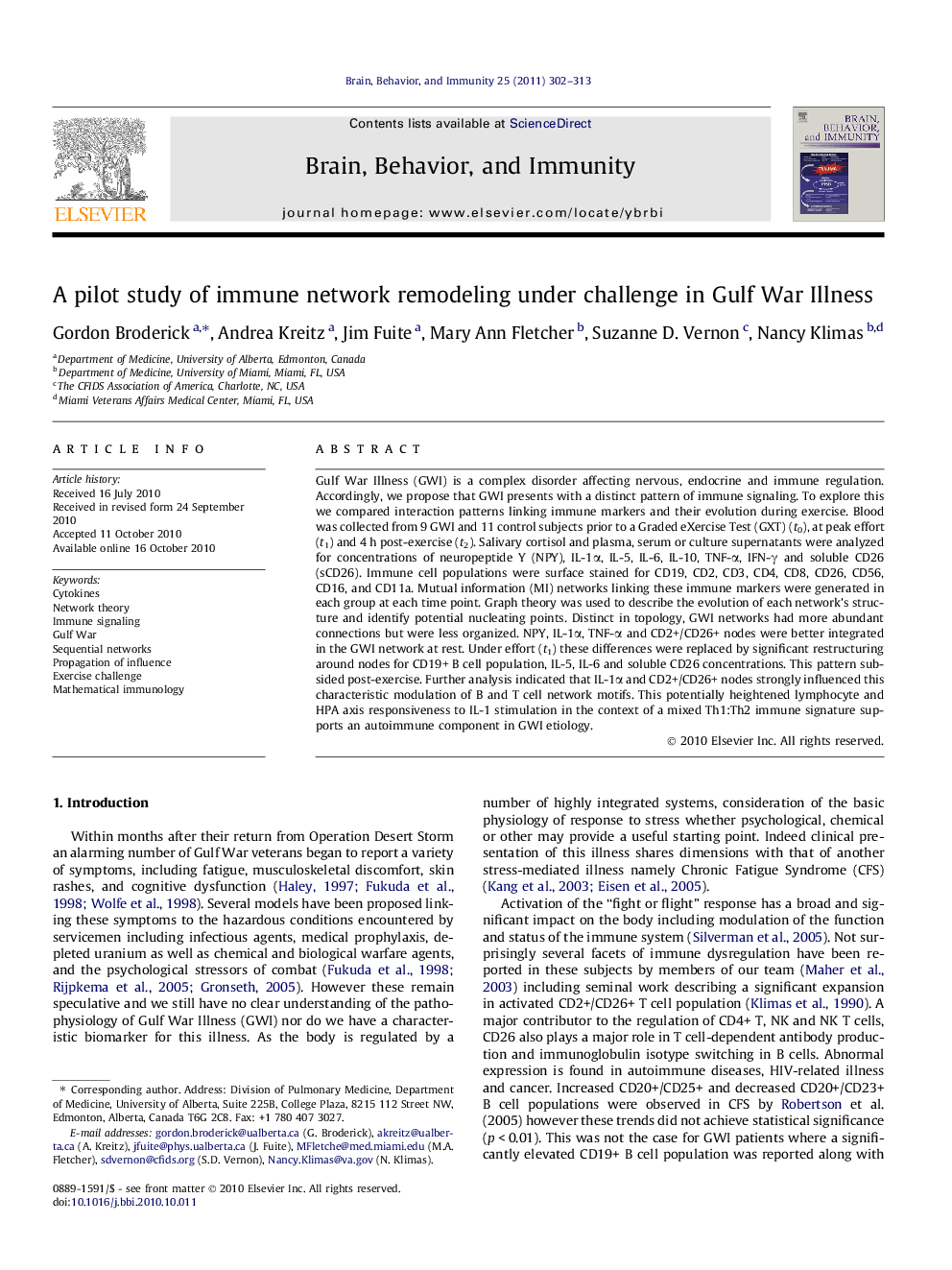| کد مقاله | کد نشریه | سال انتشار | مقاله انگلیسی | نسخه تمام متن |
|---|---|---|---|---|
| 922668 | 921055 | 2011 | 12 صفحه PDF | دانلود رایگان |

Gulf War Illness (GWI) is a complex disorder affecting nervous, endocrine and immune regulation. Accordingly, we propose that GWI presents with a distinct pattern of immune signaling. To explore this we compared interaction patterns linking immune markers and their evolution during exercise. Blood was collected from 9 GWI and 11 control subjects prior to a Graded eXercise Test (GXT) (t0), at peak effort (t1) and 4 h post-exercise (t2). Salivary cortisol and plasma, serum or culture supernatants were analyzed for concentrations of neuropeptide Y (NPY), IL-1α, IL-5, IL-6, IL-10, TNF-α, IFN-γ and soluble CD26 (sCD26). Immune cell populations were surface stained for CD19, CD2, CD3, CD4, CD8, CD26, CD56, CD16, and CD11a. Mutual information (MI) networks linking these immune markers were generated in each group at each time point. Graph theory was used to describe the evolution of each network’s structure and identify potential nucleating points. Distinct in topology, GWI networks had more abundant connections but were less organized. NPY, IL-1α, TNF-α and CD2+/CD26+ nodes were better integrated in the GWI network at rest. Under effort (t1) these differences were replaced by significant restructuring around nodes for CD19+ B cell population, IL-5, IL-6 and soluble CD26 concentrations. This pattern subsided post-exercise. Further analysis indicated that IL-1α and CD2+/CD26+ nodes strongly influenced this characteristic modulation of B and T cell network motifs. This potentially heightened lymphocyte and HPA axis responsiveness to IL-1 stimulation in the context of a mixed Th1:Th2 immune signature supports an autoimmune component in GWI etiology.
Research highlights
► Lymphocyte–cytokine interactions differ significantly in Gulf War Illness (GWI).
► GWI immune response to exercise is more resource intensive and less centrally directed.
► Concurrent Th1:Th2 activity in GWI undergoes characteristic shift under challenge.
► NK, T cell motifs give way to transient B cell centric network at peak effort.
► Heightened sensitivity to initial IL-1α and CD2+/CD26+ status are possible GWI mediators.
Journal: Brain, Behavior, and Immunity - Volume 25, Issue 2, February 2011, Pages 302–313